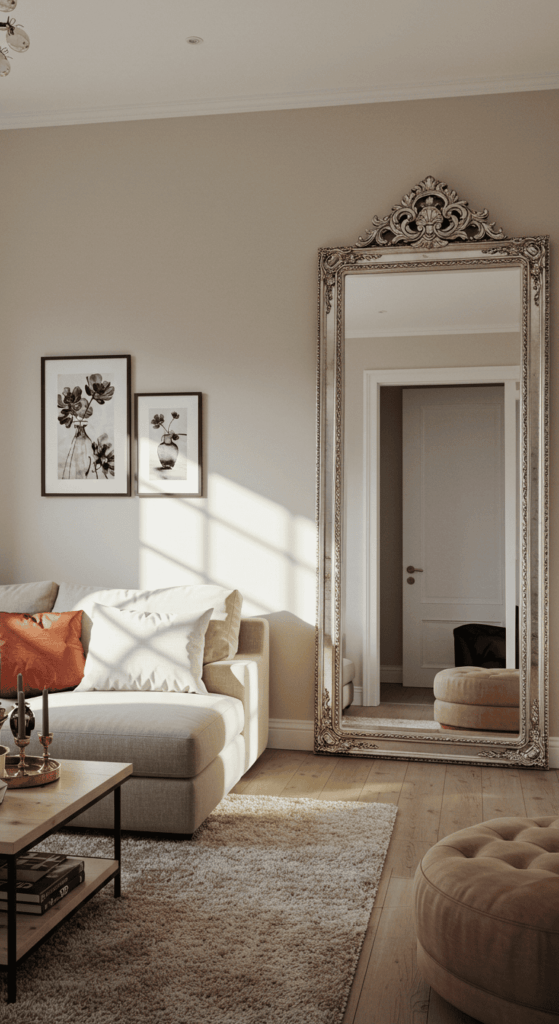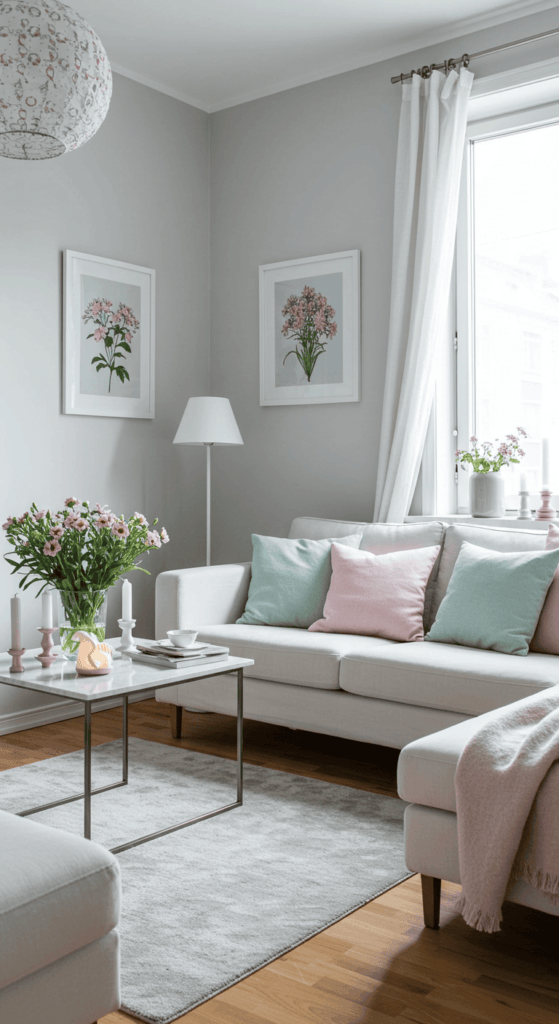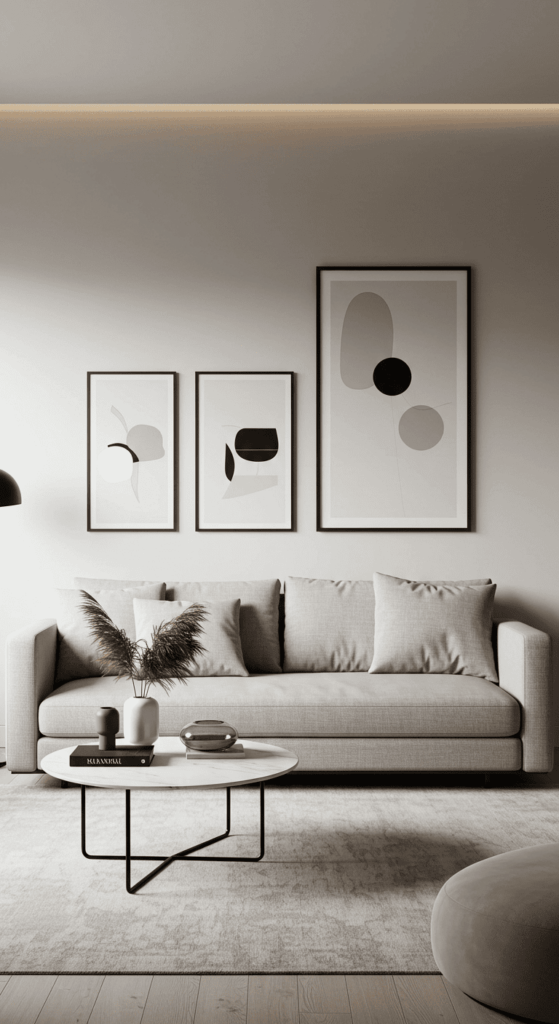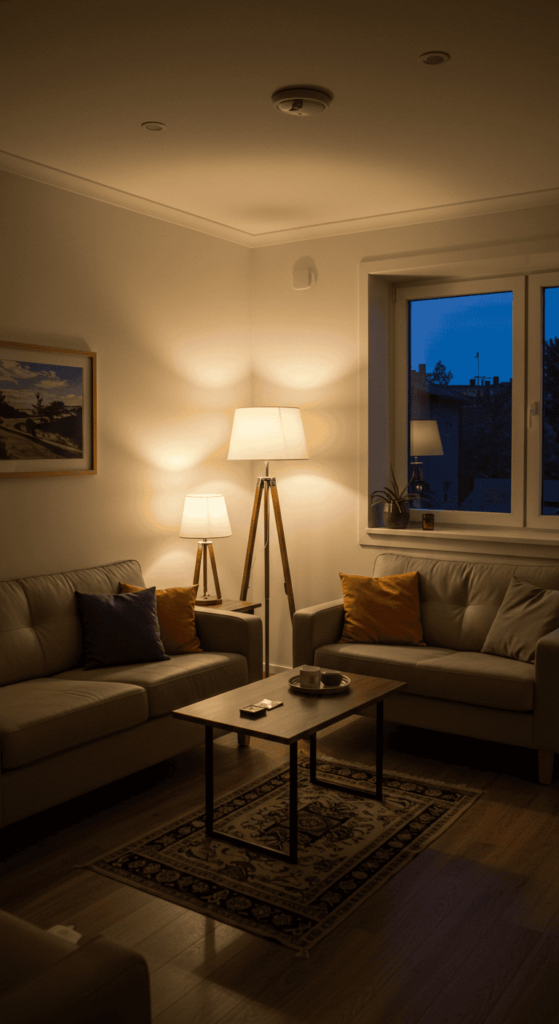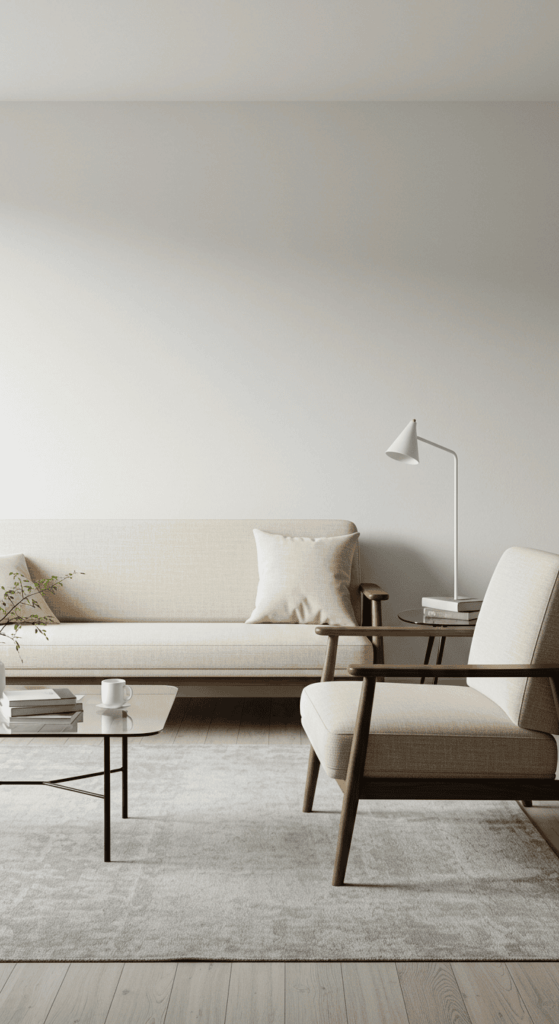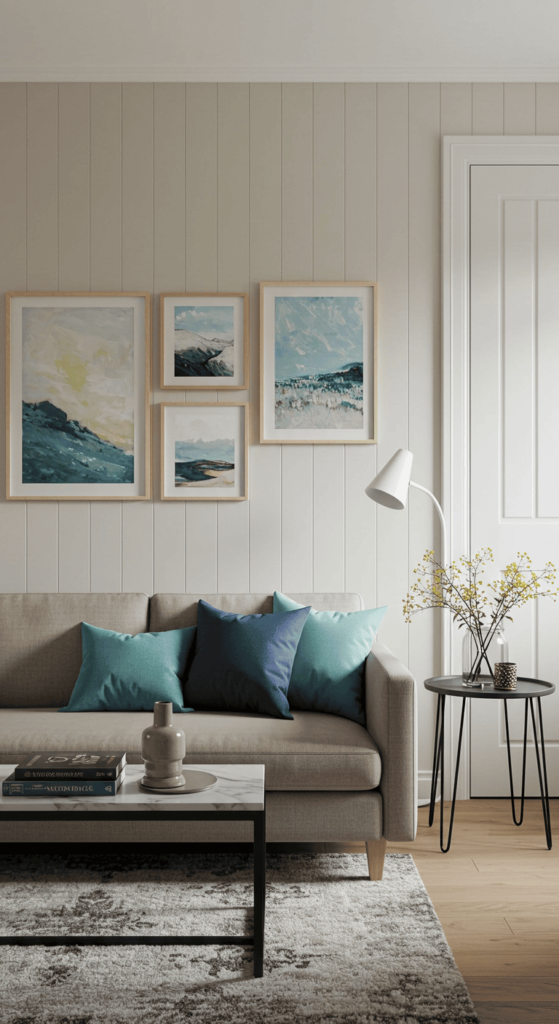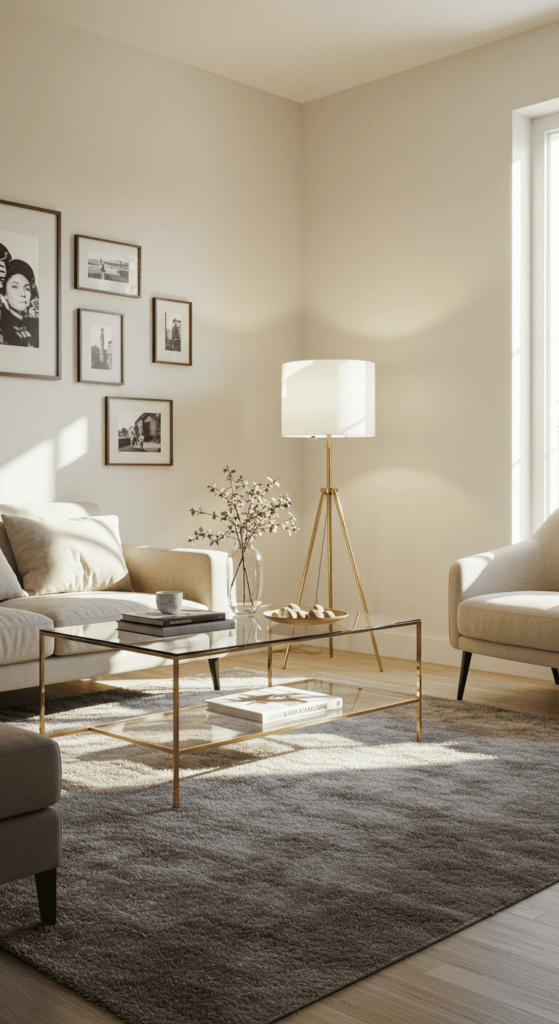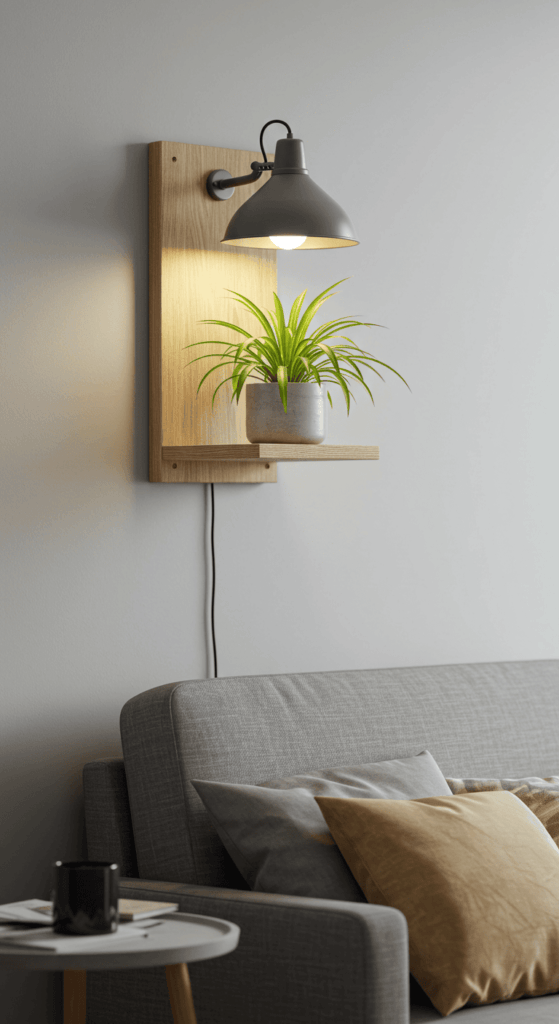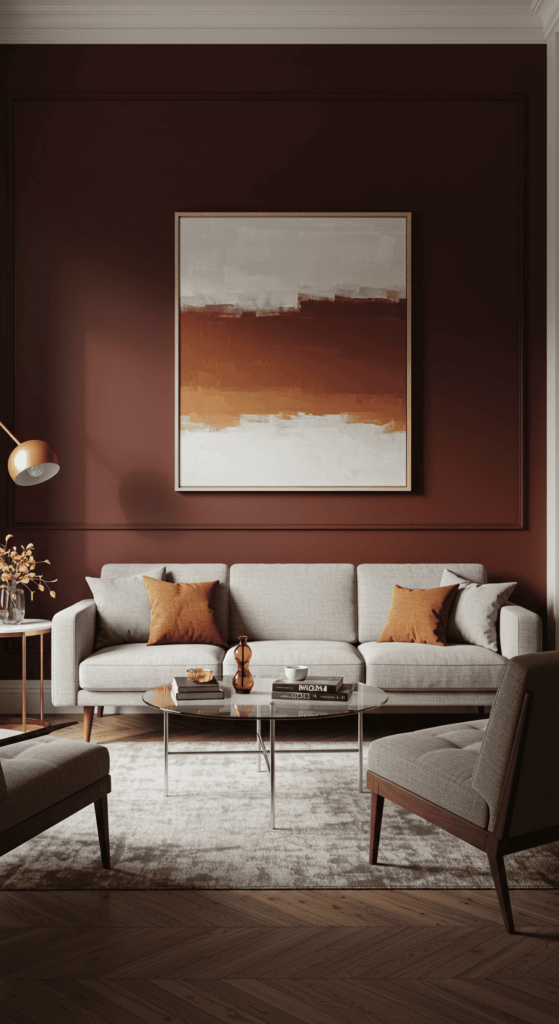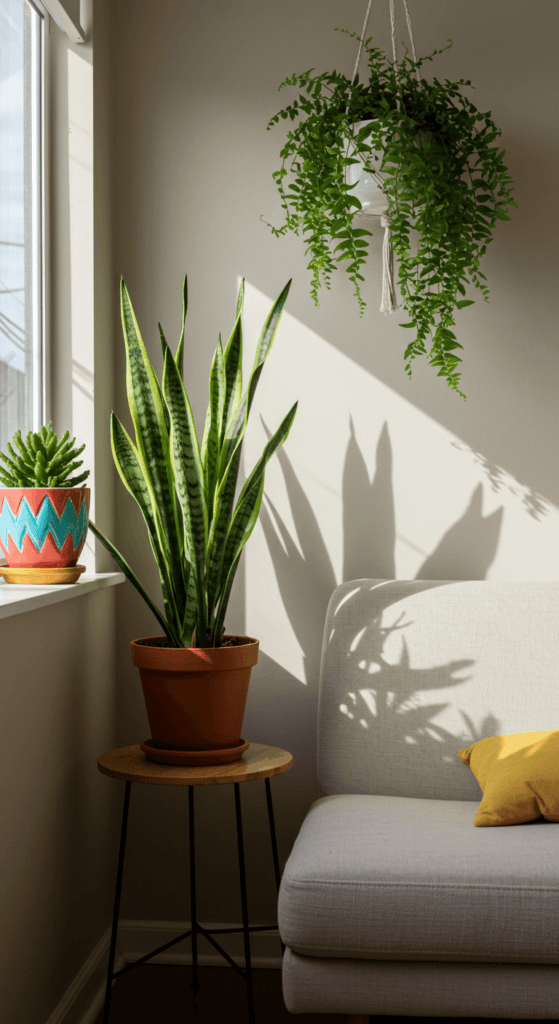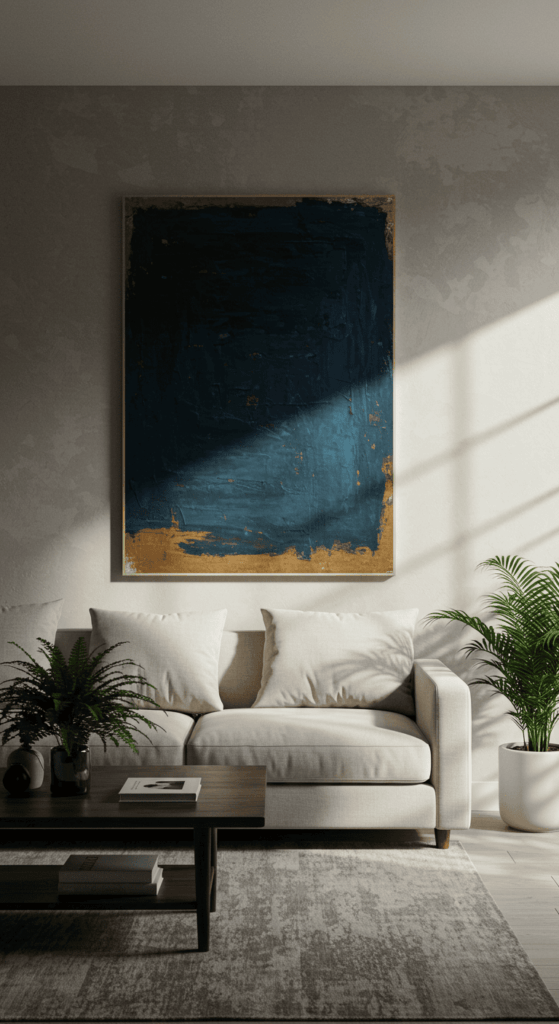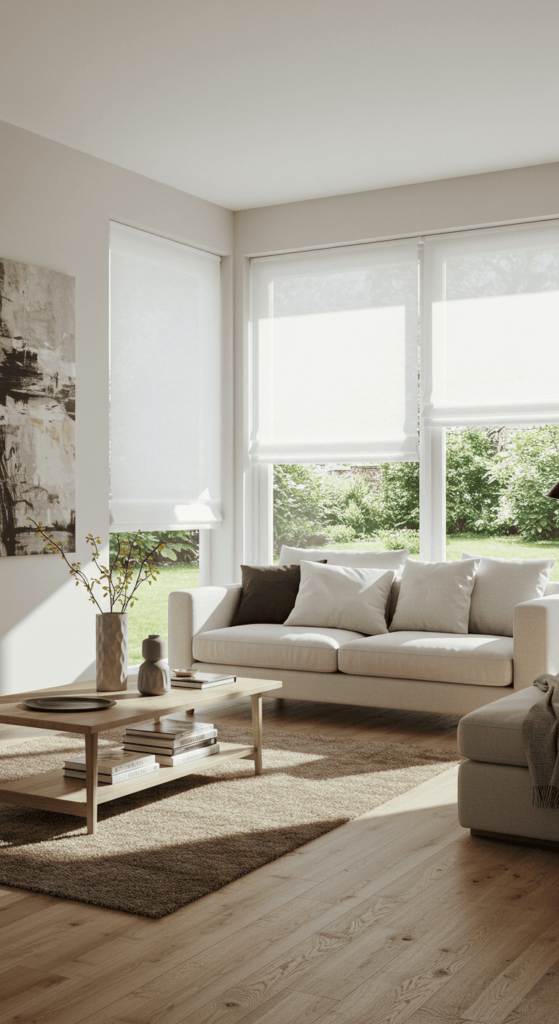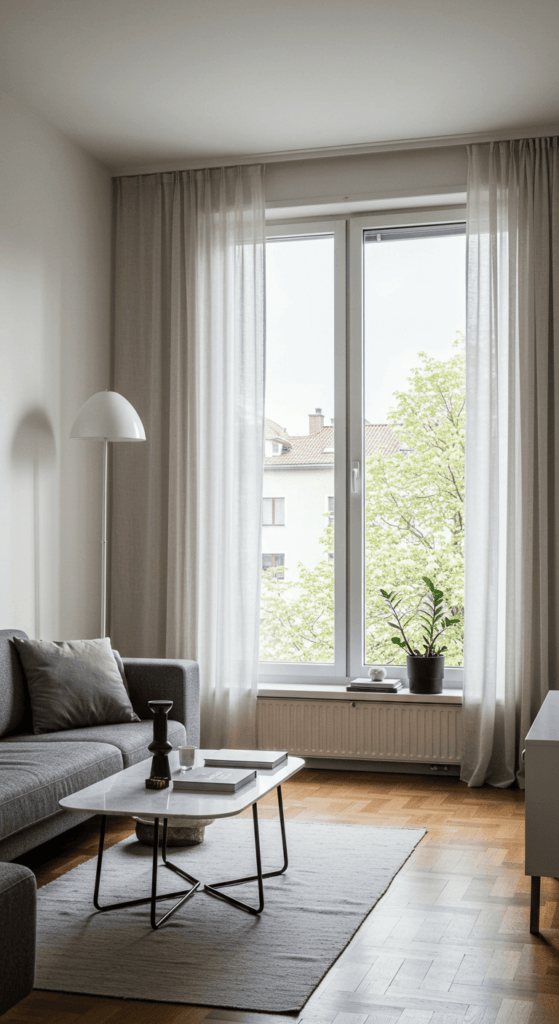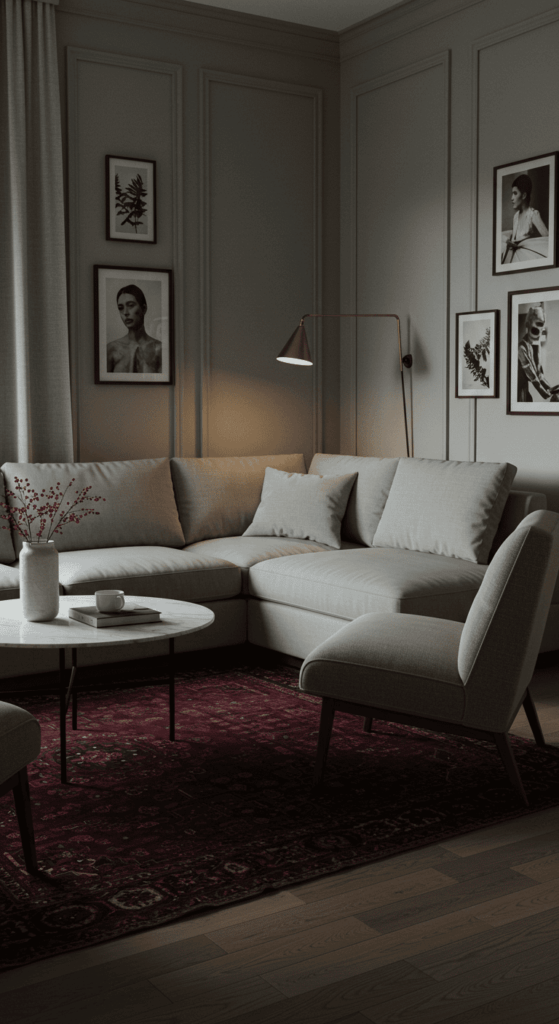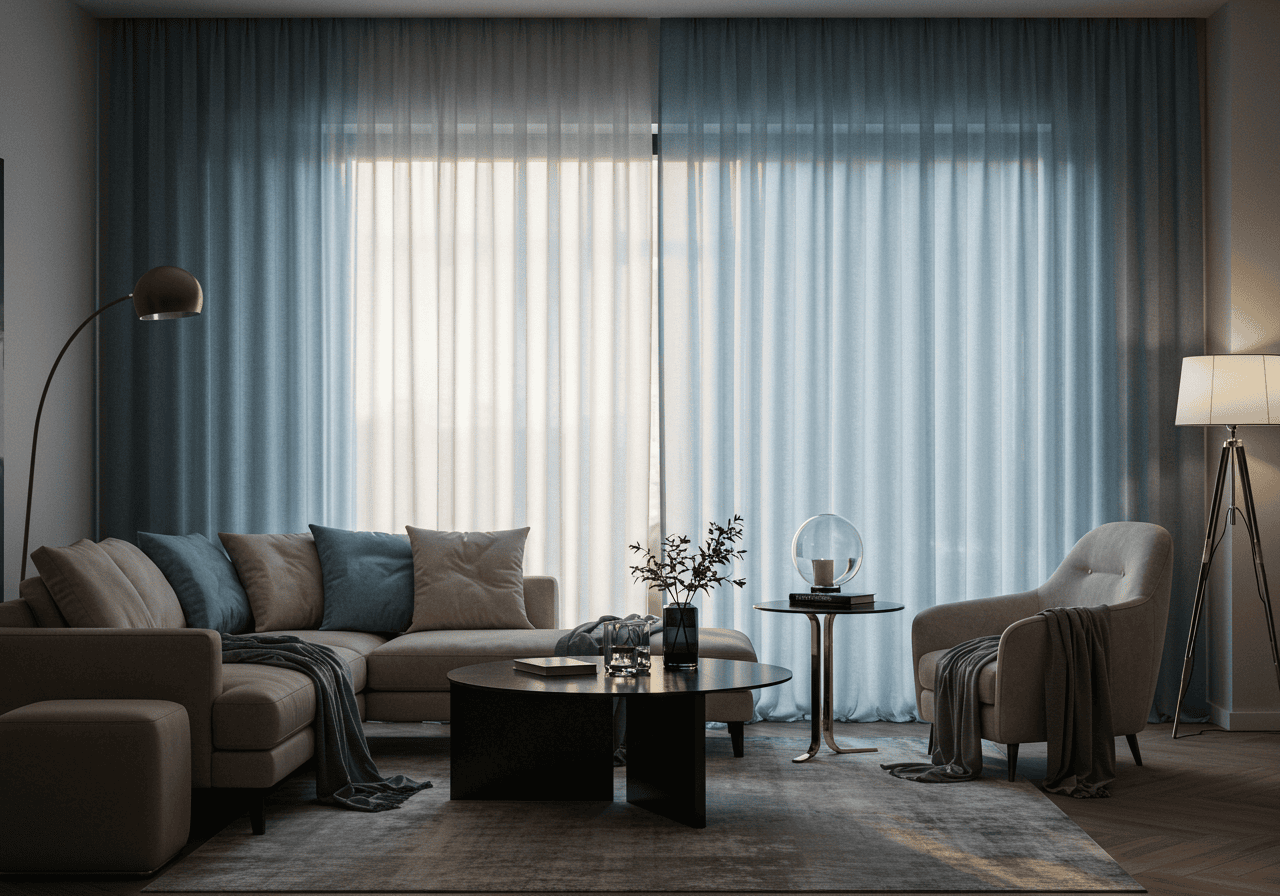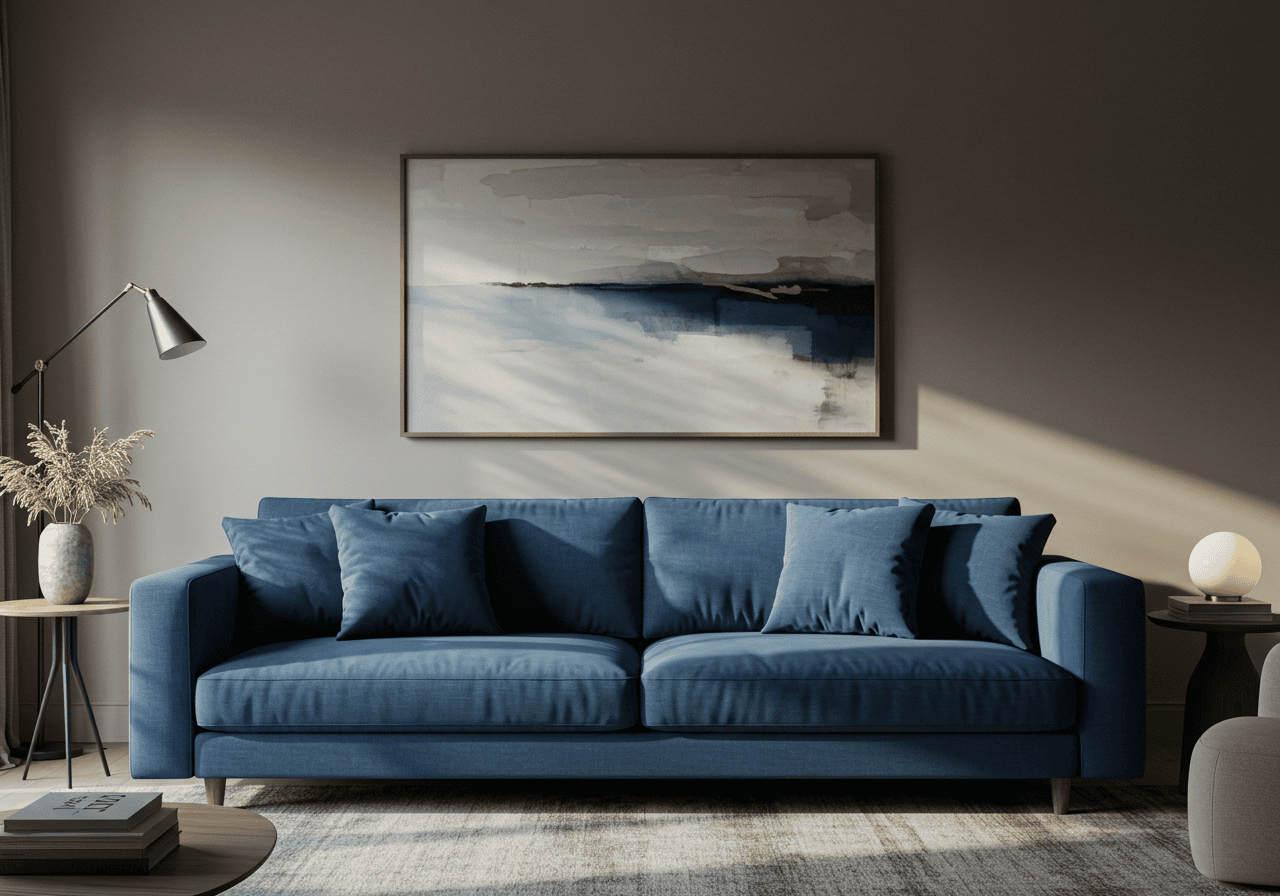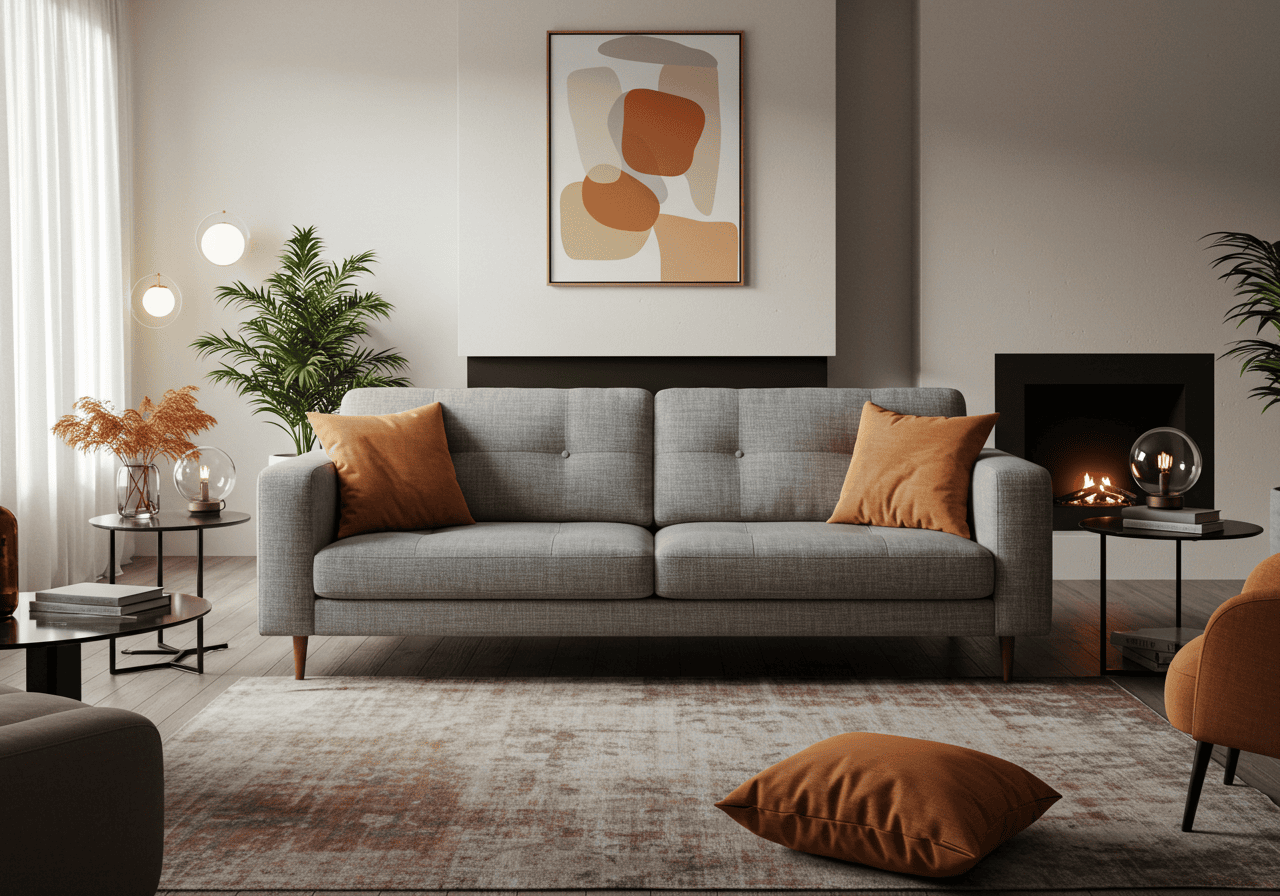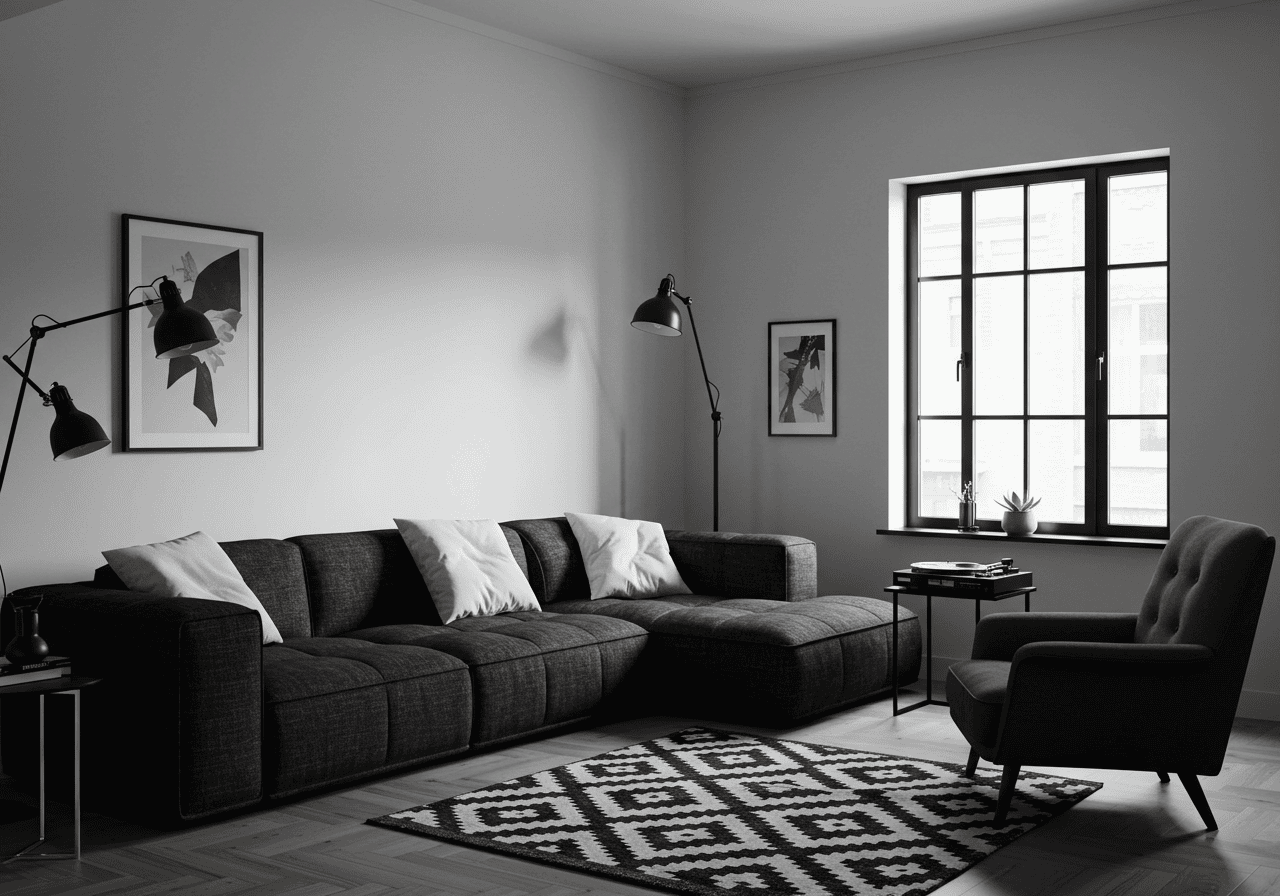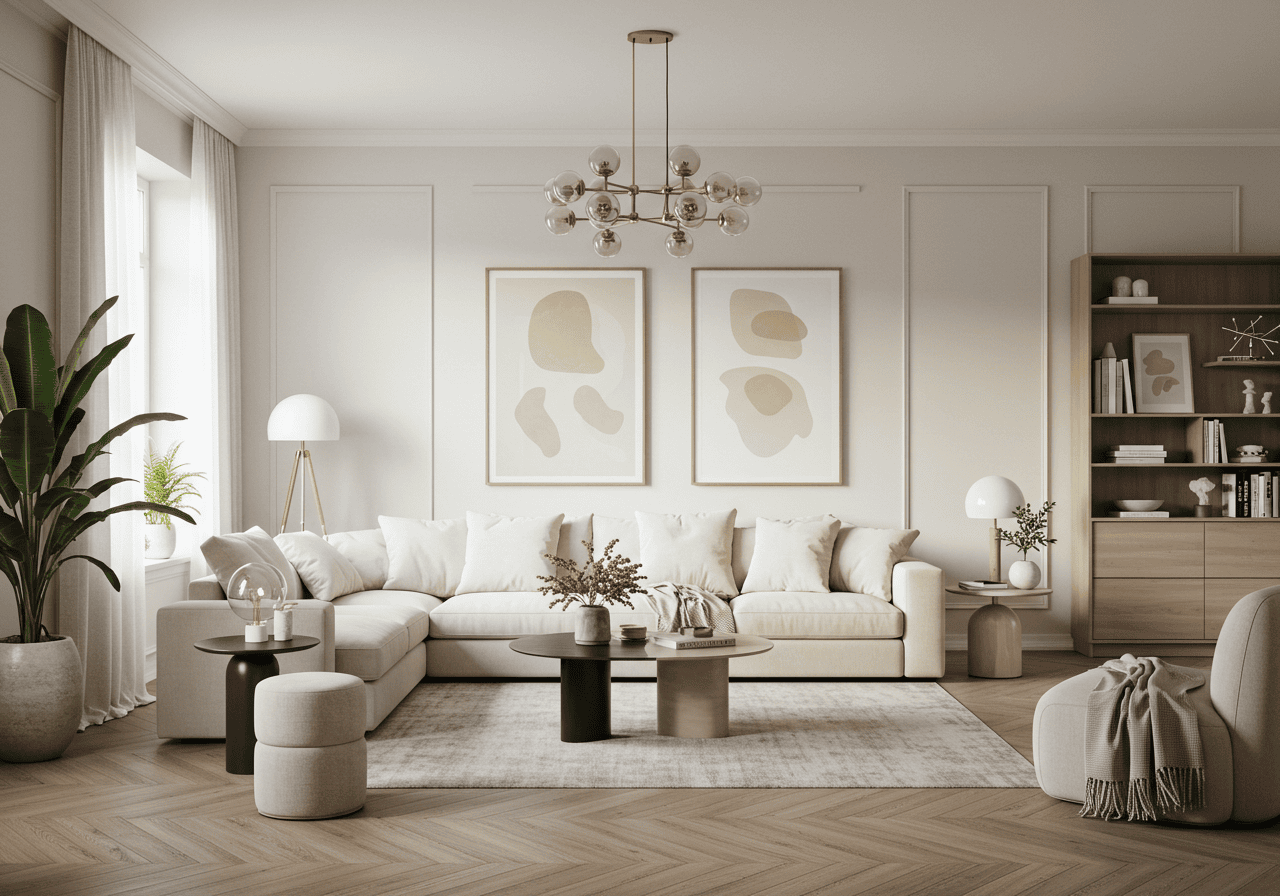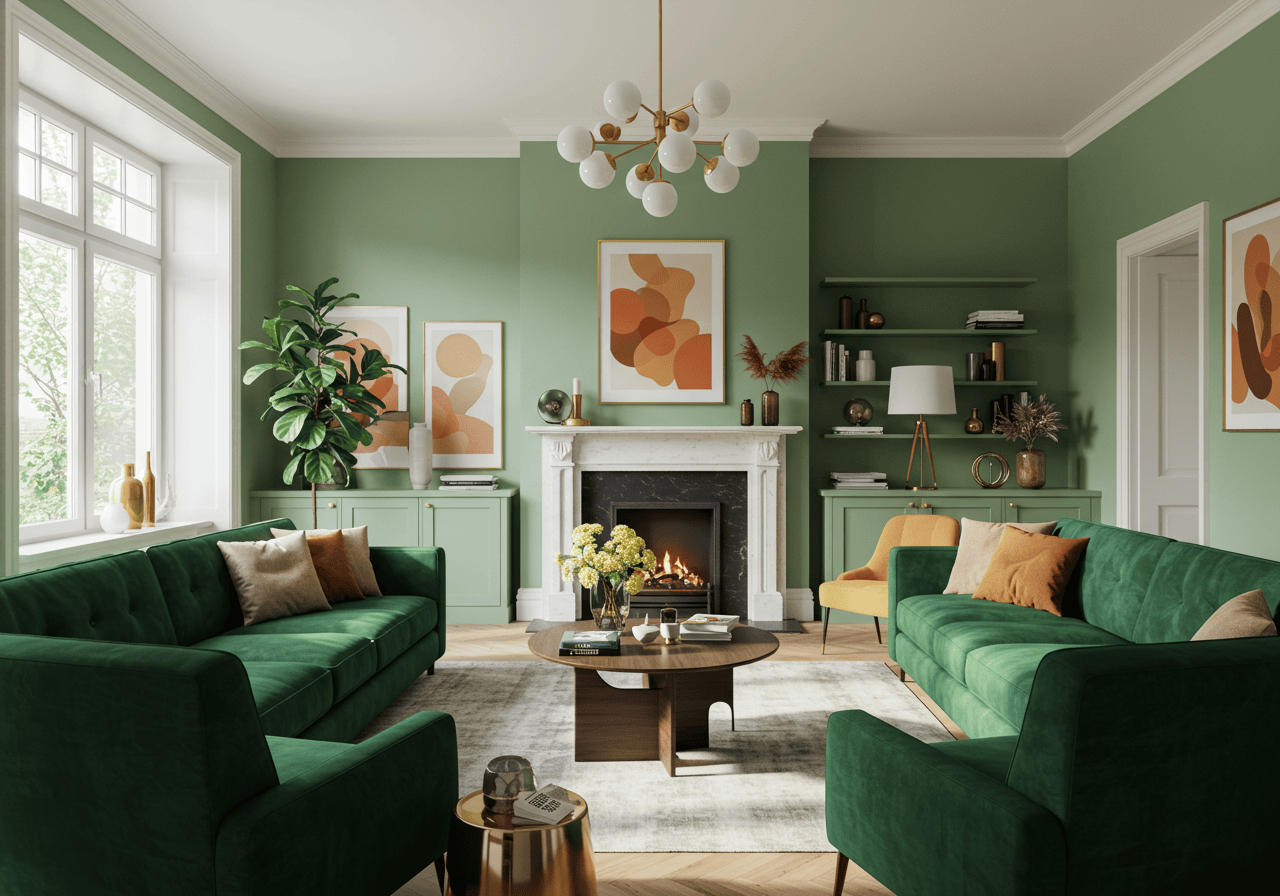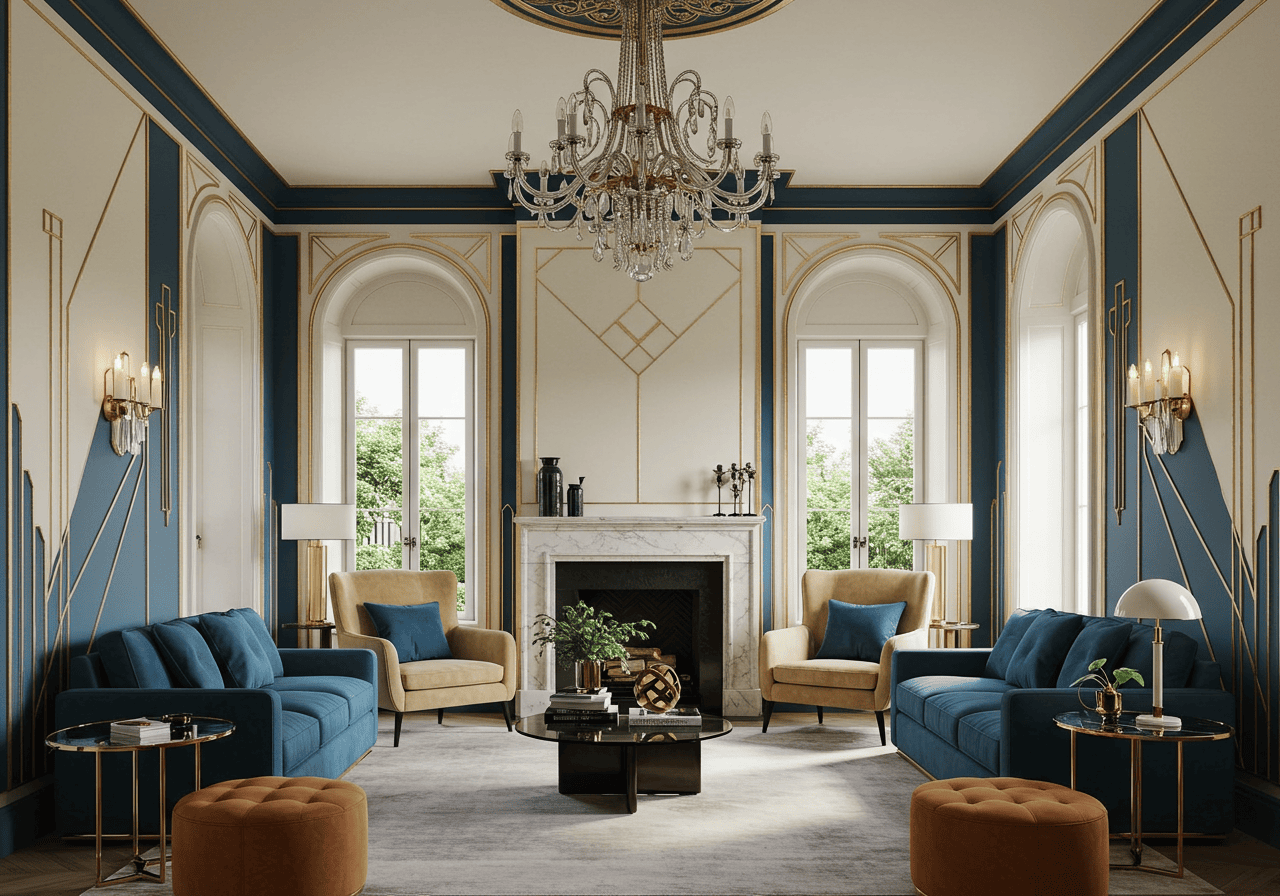Living in a cozy apartment or a charming smaller home doesn’t mean you have to sacrifice style or comfort! In fact, small living rooms often present the most exciting design challenges, pushing us to be creative and resourceful.
We’re here to prove that limited square footage can be an opportunity for unlimited design potential. Ready to transform your compact living area into a haven of beauty and functionality? Let’s dive in!
1. Embrace the Power of Vertical Space
Think Up, Not Out! When floor space is at a premium, the only way to go is up. Harnessing vertical space is the cardinal rule of small-room design. It draws the eye upward, creating an illusion of height and airiness, making the room feel significantly larger than it is.
Tall Bookshelves: Floor-to-ceiling bookshelves are your best friend. They provide ample storage, display space for decorative items, and instantly elevate the room’s perceived height. Opt for open shelving to maintain a light and airy feel.
High-Mounted Shelves: Instead of bulky cabinets, consider floating shelves placed strategically higher on the walls. This keeps the floor clear and provides display space for plants, artwork, or books.
Vertical Art Displays: A gallery wall that extends towards the ceiling is a fantastic way to add personality and visual interest without consuming valuable floor space.
2. Mirror, Mirror on the Wall (and Everywhere Else!)
Mirrors are the secret weapon of interior designers when it comes to small spaces. They work magic by reflecting light, visually expanding the room, and creating a sense of depth. Don’t be afraid to go big!
Large Statement Mirror: A large, strategically placed mirror (opposite a window is ideal) can instantly double the perceived size of your living room. Consider a floor-length mirror leaning against a wall for a casual yet chic look.
Mirrored Furniture: Incorporate furniture with mirrored surfaces, such as a mirrored coffee table or side table. This adds a touch of glamour and further enhances the light-reflecting effect.
Gallery Wall of Mirrors: Instead of traditional artwork, create a gallery wall using a collection of smaller mirrors in various shapes and sizes. This adds a unique and stylish touch while maximizing the illusion of space. You can even have a mid-century modern living room to enhance the vintage feel.
3. The Magic of Light and Airy Colors
Color plays a crucial role in how we perceive space. Dark colors tend to absorb light, making a room feel smaller and more enclosed. Light and airy colors, on the other hand, reflect light, creating a sense of openness and spaciousness.
Neutrals are Your Friends: Embrace a palette of whites, creams, light grays, and soft pastels for your walls and larger furniture pieces. These colors create a calming and expansive backdrop.
Strategic Pops of Color: Don’t be afraid to add pops of color through accessories, throw pillows, artwork, and even your curtains ideas for living room. This adds personality and visual interest without overwhelming the space. Choose colors that complement your neutral base.
Monochromatic Schemes: Using varying shades of the same color can create a cohesive and sophisticated look while still maintaining a sense of spaciousness.
4. Choose Multi-Functional Furniture Wisely
In a small living room, every piece of furniture needs to earn its keep! Opting for multi-functional pieces is a game-changer, maximizing both space and functionality. Think smart storage and clever design.
Ottoman with Storage: Swap a traditional coffee table for an ottoman with built-in storage. It provides a place to rest your feet, extra seating when guests arrive, and a hidden compartment for blankets, magazines, or toys.
Sofa Beds: If you frequently host overnight guests, a stylish sofa bed is a must-have. It seamlessly transitions from a comfortable seating area to a cozy bed, eliminating the need for a separate guest room.
Nesting Tables: Nesting tables are incredibly versatile. They can be pulled out when needed to provide extra surface area and tucked away neatly when not in use, saving valuable floor space.
5. Float Your Furniture (and Your Worries Away!)
The way you arrange your furniture can dramatically impact the perceived size of your living room. “Floating” your furniture, meaning pulling it away from the walls, creates a sense of flow and openness, making the room feel less cramped.
Create a Conversation Area: Arrange your sofa and chairs in a way that encourages conversation, facing each other rather than all facing the TV. This creates a more intimate and inviting atmosphere.
Leave Space Around Furniture: Avoid pushing all your furniture against the walls. Even a few inches of breathing room can make a significant difference in the overall feel of the space.
Use Rugs to Define Zones: A well-placed area rug can help define the seating area and anchor the furniture, creating a sense of cohesion and visual separation.
6. Embrace Minimalist Decor
In a small space, less is truly more. Clutter can quickly overwhelm a small living room, making it feel even smaller and more chaotic. Embrace a minimalist approach to decor, focusing on quality over quantity.
Curate Your Belongings: Be selective about the items you display. Choose a few meaningful pieces that you truly love, rather than filling every surface with knick-knacks.
Clear Surfaces: Keep surfaces like coffee tables, side tables, and shelves relatively clear. This creates a sense of calm and order.
Utilize Hidden Storage: Maximize hidden storage options, such as drawers, cabinets, and ottomans with storage, to keep clutter out of sight.
7. Let There Be (Strategic) Light!
Lighting is crucial in any room, but it’s especially important in a small living room. A well-lit space feels brighter, larger, and more inviting. Combine natural light with strategic artificial lighting.
Maximize Natural Light: Keep windows unobstructed and use sheer curtains or blinds to allow natural light to flood the room.
Layered Lighting: Incorporate a mix of lighting sources, including ambient lighting (overhead fixtures), task lighting (floor lamps or table lamps), and accent lighting (wall sconces or picture lights).
Dimmers: Install dimmers on your light switches to control the intensity of the light and create different moods.
8. Clever Curtain Choices Can Create Illusions
Your window treatments can play a surprisingly significant role in the perceived size of your living room. The right curtains, hung correctly, can make your windows appear larger and your ceilings higher.
Hang High and Wide: Hang your curtain rods close to the ceiling and extend them beyond the width of the window frame. This creates the illusion of taller and wider windows.
Choose Light and Airy Fabrics: Opt for sheer or lightweight fabrics that allow natural light to filter through, even when the curtains are closed. This keeps the room feeling bright and open.
Vertical Stripes: If you’re feeling adventurous, curtains with vertical stripes can further enhance the illusion of height.
9. Utilize Corners Effectively
Corners often get overlooked in small living rooms, but they can be valuable real estate for storage or display. Making smart use of corner space can free up floor space elsewhere.
Corner Shelves: Install floating corner shelves to provide storage for books, plants, or decorative items.
Corner Desk: If you need a workspace, a small corner desk can fit neatly into a corner without taking up too much room.
Tall Plants: A tall, leafy plant in a corner can add a touch of greenery and draw the eye upward, creating a sense of height.
10. Personalize with Purpose
While minimalism is key, a small living room should still reflect your personality and style. Don’t be afraid to add personal touches, but do so with intention and purpose.
Meaningful Artwork: Choose artwork that you love and that resonates with you. A few carefully selected pieces can add character and visual interest without overwhelming the space.
Cozy Textiles: Incorporate soft textures, such as throw blankets and pillows, to add warmth and comfort.
Collections Displayed Smartly: If you have a collection, display it in a curated and organized way, such as on a bookshelf or in a shadow box.
11. Opt for Leggy Furniture
Furniture with exposed legs creates a sense of airiness and openness, making the room feel less visually cluttered. This is in contrast to furniture that sits directly on the floor, which can appear bulky and heavy.
Sofas and Armchairs: Choose sofas and armchairs with slender, raised legs. This allows light to flow underneath, creating a more spacious feel.
Coffee Tables and Side Tables: Look for coffee tables and side tables with slim legs, rather than solid bases.
Avoid Skirted Furniture: Skirted furniture (furniture with fabric that covers the legs) can make a small room feel more confined.
12. Use a Consistent Color Palette Throughout
While pops of color are great, maintaining a consistent color palette throughout your small living room will create a sense of cohesion and visual harmony, making the space feel larger and more unified.
Choose 2-3 Main Colors: Select a base color (usually a neutral) and one or two accent colors.
Repeat Colors in Different Elements: Use your chosen colors in various elements throughout the room, such as walls, furniture, textiles, and accessories. This creates a sense of flow and connection.
Vary Shades and Tones: Within your chosen color palette, use different shades and tones of each color to add depth and visual interest without creating a chaotic look. Don’t be afraid to try different textures that match your color palette, too.
13. Incorporate Reflective Surfaces (Beyond Mirrors)
While mirrors are fantastic, other reflective surfaces can also help to bounce light around the room and create a sense of spaciousness.
Glass Tabletops: A coffee table or side table with a glass top allows light to pass through, making the room feel less cluttered.
Metallic Accents: Incorporate metallic accents, such as lamps, picture frames, or decorative objects, to add a touch of shine and reflect light.
Glossy Finishes: Consider using furniture or accessories with glossy finishes, such as lacquered cabinets or polished metal.
14. Think Double-Duty with Your Lighting
In a small space, every element should be as functional as possible, and lighting is no exception. Choose lighting fixtures that serve multiple purposes.
Sconces with Shelves: Wall sconces with built-in shelves provide both lighting and a small display space.
Floor Lamps with Trays: Some floor lamps come with small attached trays, which can serve as a convenient spot for a drink or a book.
Adjustable Lighting: Opt for lighting fixtures that can be adjusted to provide different levels of light and direct the light where it’s needed.
15. Create a Focal Point
Drawing the eye to a specific focal point can make a small living room feel more intentional and less cluttered.
Fireplace: If you have a fireplace, make it the focal point by arranging furniture around it.
Statement Artwork: A large, eye-catching piece of artwork can serve as a focal point.
Accent Wall: Create an accent wall with a bold color or wallpaper to draw attention to a specific area.
16. Utilize Wall-Mounted Furniture
Wall-mounted furniture frees up valuable floor space and creates a more streamlined look.
Floating Shelves: Wall-mounted shelves are a classic choice for small spaces.
Wall-Mounted TV: Mounting your TV on the wall eliminates the need for a bulky TV stand.
Wall-Mounted Desks: A wall-mounted desk can provide a workspace without taking up much room.
17. Embrace the Power of Plants
Plants add life, color, and texture to a small living room, and they can also help to purify the air.
Vary Heights: Use plants of different heights to create visual interest.
Hanging Plants: Hanging plants are a great way to add greenery without taking up floor space.
Choose Low-Maintenance Options: If you’re not a green thumb, opt for low-maintenance plants that are easy to care for.
18. Go Bold with a Single Statement Piece
While minimalism is generally recommended for small spaces, don’t be afraid to incorporate one bold statement piece to add personality and visual interest.
Oversized Artwork: A large, dramatic piece of artwork can make a big impact.
Unique Furniture Piece: Choose one unusual or eye-catching piece of furniture, such as a brightly colored armchair or a sculptural coffee table.
Statement Rug: A bold, patterned rug can add a pop of color and personality.
19. Keep Window Treatments Simple
Elaborate window treatments can overwhelm a small living room. Opt for simple, streamlined options.
Roman Shades: Roman shades are a classic choice for small spaces, providing privacy and light control without being too bulky.
Roller Shades: Roller shades are another simple and functional option.
Sheer Curtains: Sheer curtains allow natural light to filter through while still providing some privacy.
20. Don’t Block Natural Light Sources
Natural light is precious in any space, but it’s absolutely crucial in a small living room. Blocking natural light sources will make the room feel darker, smaller, and more cramped. Maximize the light you have.
Avoid Heavy Furniture in Front of Windows: Don’t place large, bulky furniture directly in front of windows, as this will obstruct the flow of natural light.
Keep Window Sills Clear: Avoid cluttering window sills with too many objects, as this can also block light.
Prune Trees and Shrubs: If you have trees or shrubs outside your windows that are blocking sunlight, consider pruning them to allow more light to enter the room.
21. Consider a Round Coffee Table
A round coffee table can be a better choice for small spaces than a rectangular one. It takes less floor space visually, and it can create easier flow because you don’t have sharp corners to walk around.
Easier to get around: Round shapes make it easier to maneuver.
Softer aesthetic: Circles bring a softer design that creates a more harmonious feeling.
More legroom: A round coffee table has better legroom for all those sitting around it.
Conclusion: Small Space, Big Impact!
Designing a small living room is all about making smart choices and embracing creativity. By implementing these tips and tricks, you can transform your compact space into a stylish, functional, and inviting haven.
Remember, it’s not about the size of your room, but how you use it. With a little planning and a touch of inspiration, you can create a living room that you’ll love, no matter how small it may be! So go ahead, embrace the challenge, and create a space that reflects your unique style and maximizes every square inch.
Happy decorating!



